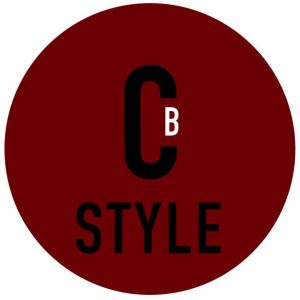This Tuesday (May 5th) at the Metropolitan Museum of Art was the annual Met Gala. It was formally called the Costume Institute Gala, but is best known as the Met Ball. It is one of the most important fashion events of the year, and its purpose is to be a fundraiser which benefits the Metropolitan Museum of Art’s Costume Institute. Every year the Gala gathers the most important people from the arts, the business world and the fashion industry. The theme for this year’s event was “China: Through the Looking Glass”, which was influenced by the spring 2015 exhibit at the Costume Institute which is also dedicated to Chinese fashion.
Aside from the fundraising, the Met Ball is always a great opportunity for designers to present their take on the theme with cooperation from celebrities, who every year shock the public with more and more creative stylizations.
And this year’s guest list was full of big names: Rihanna, Beyonce and Jay-Z, Kim Kardashian and Kanye West, Julianne Moore, Katy Perry, Seth Meyers, James Corden, Harvey Weinstein, Jessica Chastain, Bradley Cooper, Benedict Cumberbatch, Neil Patrick Harris, Anne Hathaway, Ethan Hawke, Dakota Johnson, Spike Jonze, Blake Lively, Ryan Reynolds, Baz Luhrmann, Sienna Miller, Carey Mulligan, Rita Ora, Sarah Jessica Parker and Matthew Broderick, Eddie Redmayne, Amanda Seyfried, Ivanka Trump, Florence Welch, Allison Williams, Reese Witherspoon, FKA Twigs and many others.
The full list of designers was: Christopher Bailey, Tory Burch, Sarah Burton, Georgina Chapman, Kenneth Cole, Maria Grazia Chiuri and Pierpaolo Piccioli, Peter Copping, Francisco Costa, Domenico Dolce, Stefano Gabbana, Alber Elbaz, Alberta Ferretti, Tom Ford, Valentino Garavani, Nicolas Ghesquiere, Lazaro Hernandez, Carolina Herrera, Dee and Tommy Hilfiger, Marc Jacobs, Donna Karan, Michael Kors, Karl Lagerfeld, Derek Lam, Ralph Lauren, Jenna Lyons, Stella McCartney, Alasdhair Willis, Jack McCollough, Tamara Mellon, Gilles Mendel, Marcus Wainwright, Ashley Olsen, Mary-Kate Olsen, Thakoon Panichgul, Zac Posen, Miuccia Prada, Raf Simons, Riccardo Tisci, Giambattista Valli, Dries Van Noten, Donatella Versace, Diane von Furstenberg, Alexander Wang, Vera Wang, David Neville, Jason Wu.
Meaning: creme de la creme.
Below you will find some of the looks many of which caused a lot of controversy.
(Let us know what you think about them in the comment section)
Organizer of the Met Gala
Amanda Seyfried in Givenchy Haute Couture Beyoncé in Givenchy
Mary Kate in vintage Dior & Selena Gomez in Vera Wang
Ashley Olsen in John Galliano
Sarah Jessica Parker in H&M gown & Justin Bieber in Balmain
Philip Treacy head piece
Sources:








 The guideline for trends has never been so unclear and shopping options are endless. The media keep up with sartorial trends that are constantly being introduced in the fashion industry , because everything can be consider to be in in “vogue”: from casual chic to sportswear, from a 50’s or 70’s inspired wardrobe to normcore style, from head-to-toe black to pastel colors… The constant renewal of fashion seems to have killed trends themselves.
The guideline for trends has never been so unclear and shopping options are endless. The media keep up with sartorial trends that are constantly being introduced in the fashion industry , because everything can be consider to be in in “vogue”: from casual chic to sportswear, from a 50’s or 70’s inspired wardrobe to normcore style, from head-to-toe black to pastel colors… The constant renewal of fashion seems to have killed trends themselves.